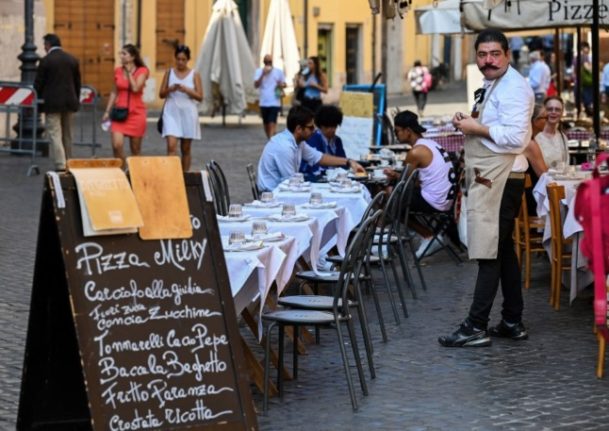Italy’s favourite aperitivo-hour cocktails are known far beyond the country’s borders, so their names will probably be familiar to you whether you drink them or not.
But if you’re in Italy and not drinking alcohol, you might find yourself stumped when it comes time to order your aperitivo at the bar.
The first time I found myself in this situation, there was no menu. The waiter instead rattled off a long list of all the soft drinks available, most of which I’d never heard of, and I just picked something I thought sounded nice.
Luckily it turns out that Italy has some great options for an aperitivo analcolico. As well as ‘virgin’ versions of well-known cocktails, there are bitters, sodas and other Italian-made soft drinks that you’re unlikely to find anywhere else.
They might not be quite as iconic as the Aperol Spritz, but they’re as thoroughly Italian – plus, effortlessly ordering one of these will make you look like a true local.
SanBittèr
San Pellegrino’s SanBittèr is one of the most famous non-alcoholic Italian drinks of all, with its highly-recognisable red packaging, often enjoyed in place of Campari cocktails because of its similar dark, ruby-red color.
This drink is carbonated with a slightly sweet, citrus flavor. The recipe is more complex than that of an orange or lemon soda, with notes of spice and herbs, making it ideal to pair with your aperitivo-hour snacks.
Crodino
Crodino looks a lot like an Aperol Spritz with its bright orange hue, and that’s not an accident: it’s said to have been created as a non-alcoholic alternative, and the zesty, slightly herbal taste is similar. It’s typically served the same way. in a round goblet glass over ice with a slice of orange: a Crodino Spritz.
The name comes from the town of Crodo in Piedmont, where it is still bottled today by the Campari group.
Chinotto
Citrusy Chinotto is an acquired taste for many, but it’s worth trying: it’s one of the classic Italian bitters and is said to have a long history, dating back to a recipe shared by Chinese sailors arriving on the Ligurian coast in the 1500s.
It may look a little like Coca Cola, but don’t let the appearance fool you.

Aranciata/Limonata
Aranciata is Italy’s version of an orange soda, but not as sugary, and it tastes like oranges. Its base is sparkling water with the addition of orange juice and sugar. There are various brands, but San Pellegrino’s is the most popular. It also sells a ‘bitter’ aranciata amaro, with even less sugar, more citrus tang and herbal notes, which might be more aperitivo-hour appropriate.
Limonata is, as you might guess, the Italian answer to lemonade. Again there are many versions out there but the fizzy San Pellegrino limonata is beloved for its strong, sweet-sour flavour and there’s nothing more refreshing on a hot summer’s day.
Cedrata
Cedrata is one of Italy’s oldest and best-known non-alcoholic drinks. It’s a refreshing, carbonated drink made from a large citrus fruit called a cedro, grown in southern Italy. It’s far less bitter than a Chinotto, but not as sweet as limonata.
The main producer of Cedrata today is Tassoni, and this is what you’re likely to get if you order it at a bar.
Gingerino
This is harder to find than the other aperitivi on the list and is seen as decidedly retro, but it’s worth trying if you can track it down.
It’s another orange-coloured, sparkling drink which became popular in Italy in the 1970s and is still sold today, though you’re more likely to find it in the north-east, close to Venice, where it’s produced.
You may be expecting it to taste a lot like ginger beer, and there are similarities, but it has stronger citrus notes and more bitterness.



 Please whitelist us to continue reading.
Please whitelist us to continue reading.
Member comments